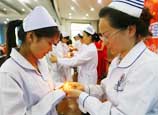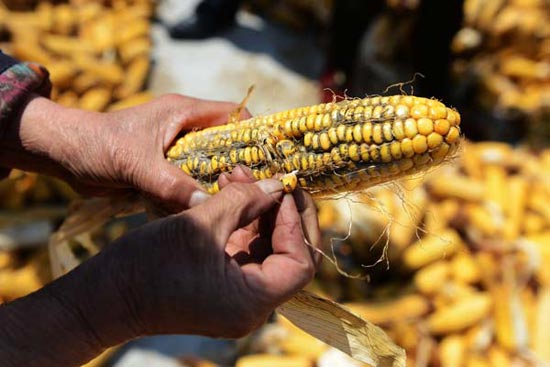
HONG KONG, May 13 (Xinhua) -- China's economic growth in 2013 is expected to reach 8.2 percent, while the achievement of the target involving a higher probability to tip the risk towards bear case than before, an economist of Morgan Stanley said Monday.
As for one of the most important unanswered questions for 2013 in many people's mind which is, whether China's growth recovery this year is sustainable or not, Helen Qiao, chief economist of Greater China of Morgan Stanley, held a view that so far statistics showed that the economy is in a mild recovery.
"For the first half of the year, we are expecting twilight... but going through the second half, we are expecting better growth under very supportive monetary policy easing," she said.
Qiao expressed her surprise on the first quarter GDP growth of 2013, which is 7.7 percent year on year, slowing from 7.9 percent year on year in the fourth quarter last year, although this number is still higher than the 7.5 percent annul target set by Chinese government for 2013.
"In sequential terms, it was actually very low. According to the National Bureau of Statistics, the number was actually as low as 6.4 percent in quarter on quarter seasonally adjusted. That was 2.4 percent lower than the fourth quarter in 2012," Qiao said.
Qiao noted that the numbers suggested that China's economic recovery is still in its preliminary stage. Therefore, April will be a very crucial month to be observed to look at how strong the growth recovery has become.
Qiao said that Morgan Stanley holds the GDP growth of 2013 of 8. 2 percent for China, although there are downside risks to this forecast, with a higher probability to tip the risk towards the bear case than before.
Nevertheless, Qiao said she still believed that with a time lag of approximately three months, the credit expansion in the first quarter will help growth rebound in the second quarter.
"Especially we are expecting more policy stimulus coming from the urbanization initiatives at the end of the year," said Qiao.
Besides, the first quarter data was understandable due to some temporary shocks such as late Lunar New Year and the leap year, and biased by statistical sampling changes, Qiao said. In addition, the adverse impact of the recent banking regulation and property policy tightening measures on liquidity and real estate investment will likely remain limited.
Qiao also mentioned that the 8.2 percent expectation may not be achieved due to some factors. First, compared to a year ago, top decision makers of China now have a higher tolerance level for lower growth, which implies limited room for policy easing in the near term. Moreover, exchange rate, energy price and income distribution reforms the government plans to roll out will likely push up production costs in China further and add cyclical headwinds to the recovery.
However, Qiao still perceived that the achievement of the target is not impossible. "To sum up, we are keeping our real GDP growth forecast of 8.2 percent this year, but not without risk."


















![]()
